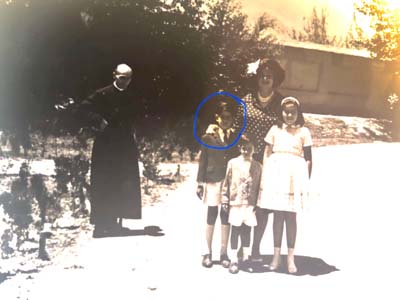
Ambassador Stefano Pontecorvo’s childhood in Kabul and 60 years later!
Newswire
For two crucial weeks in August, Stefano Pontecorvo was the world’s eyes and ears inside Hamid Karzai International Airport in Kabul. And although it wasn’t visible to the global public, the Italian diplomat was also the nerve center of the airlift that took place during those frantic weeks. As NATO’s senior civilian representative in Afghanistan, he coordinated the evacuation, which began with sparsely filled flights and ended with full ones.
Before the tumultuous end of the Western military presence in Afghanistan, Ambassador Pontecorvo had spent a year trying to shore up the Afghan government—a frustrating exercise, as Afghan President Ashraf Ghani seemed disconnected from reality.
International crisis managers will learn invaluable lessons from Pontecorvo’s mission. So will diplomats, because the collapse of Ghani’s government may finally lay to rest the West’s long-standing belief in the power of Western-educated partners.
On August 17, Ambassador Pontecorvo tweeted from Kabul’s Hamid Karzai International Airport that “Runway in HKIA #Kabul international airport is open. I see airplanes landing and taking off #Afghanistan,” and the world drew a sigh of relief, considering that the evacuation’s first couple of days had been exceptionally turbulent. Ten days later, Pontecorvo himself left Kabul on one of the final evacuation flights.

It was the bitter end of a mission that had begun a mere 14 months earlier. “Coordinating with the Americans, I tried to bring the Afghan government to a position that would favor the peace talks,” Ambassador Pontecorvo said, referring to the months after he arrived in Kabul in June 2020.
“I also tried to further NATO’s work, which included funding and training to train female soldiers and air force crews. We in NATO thought we could help the Afghan armed forces by training and pushing women in combat support roles. We thought these efforts would create real professionalism and would also create a difference between the [Afghan National Army] and the Taliban.”
It was certainly a praiseworthy effort. Earlier this year, NATO was still planning to train some 5,000 Afghan women as mechanics, intelligence officers, telecommunications officers, and similar noncombat roles in the Afghan armed forces. Ambassador Pontecorvo paid regular visits to Ghani, to ministers, and to senior officials. His regular Twitter updates featured photos of him having conversations with such dignitaries in elegant offices.
But by mid-August, Ambassador Pontecorvo and his staff of 20 had relocated to the airport. I asked Pontecorvo when he realized things were unlikely to end well. Though he hasn’t said anything to the effect, his decision to relocate suggests that at least some officials concluded Kabul was lost days before Western leaders admitted it was.
The move to the airport marked the end of a maddening period. “There had been the endless frustration of ministers and senior officials constantly changing,” he said. “But by February-March it became clear to me that the president [Ghani] was completely out of touch with reality. And by the end of July, when the Taliban were already taking one district capital after another, he held a one-hour speech to a group of ambassadors. We were expecting him to say something about the peace process. Instead, he focused on the digital agenda!”
For Ambassador Pontecorvo, Afghanistan’s failed attempt at modernization was also a source of personal sadness. He grew up in Kabul in the 1960s, the son of an Italian diplomat; when Italy initially decided to buy the embassy building, it was Ambassador Pontecorvo’s father who conducted the purchase. “The king’s brother was a good bridge player, and so was my father, and that’s how the connection happened,” Ambassador Pontecorvo said.
The Pontecorvo family, which also included his brother and sister, lived at Ansari Square. “There were lots of shops nearby, and I used to go to the bakery on my bike,” Ambasador Pontecorvo recalled. “You could go to the palace on your bike, and there was a swimming pool by the king’s summer residence that we also went to. That’s how safe it was. And there were lots of international visitors on weekends, especially from Pakistan and other Asian countries. At the time, Kabul was what Dubai is now.”
After five years in Kabul, in 1965 the Pontecorvo family moved to Islamabad. Young Stefano was 8 years old, and by then there was an Italian school at the Italian Embassy compound in Kabul, run by Italian priests. Once every two months, Ambassador Pontecorvo’s mother drove to Kabul from Islamabad with her boys so they could attend a week of Italian school, taking an Islamabad-based girl and the girl’s mother with her. “Islamabad-Peshawar-Khyber Pass-Jalalabad-Kabul,” Ambassador Pontecorvo said. “A six-hour drive. Two women, three kids, no problem whatsoever. It was the safest thing in the world.”
When Ambassador Pontecorvo returned to Afghanistan in 2020, he could only move around Ansari Square—indeed, any part of the city—in armored cars, accompanied by bodyguards. Today, the Italian Embassy stands empty, as do other Western embassies in Kabul.
